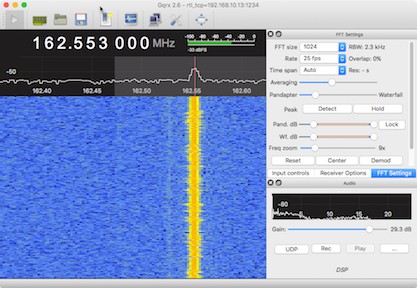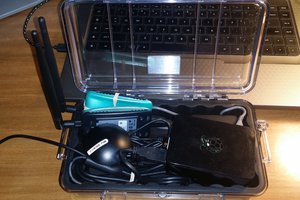my original design was based on a Pi board and Nooelec RTL-SDR. along the way, i found a very small wifi router, the GL-AR150, that comes with an external antenna, two configurable ethernet ports, a usb port and openwrt firmware for 28USD. that seemed like a deal, so I bought one and saved the Pi for another project.
i am new to openwrt and sdr, and haven't used linux at the command line for a long time, so i will get this working in stages. first goal: get the router up and running as a wifi client...
 worsthorse
worsthorse


 lpauly
lpauly

 load.nikon
load.nikon
networked RTL-SDR server - a wifi-based RTL-SDR receiver to cover 1 to 500 MHz
WorstHorse:
If you work with adria.junyent-ferre and others who are trying to network sensors and devices, you might be able to rough out some conventions, and share what you have learned. I like her approach. You basically design your SDR as a "sensor", then prepare a data stream that can be shared with others. You might try setting up a nodejs data server somewhere on the network.
I suggest stick with IP networks to start, as you have done. But it seems ridiculous for you and hundreds of thousands of other developers to keep build the same software hooks just to write your datastream onto some other device.
I will try to find some framework to make it easier. But you and Adria could at least talk about the broader data sharing needs of sensor data streams.
Personally, I would like to run ten of your SDRs for several weeks to see what the data is telling me about correlations.
I have been looking for low cost ampliier boards and high sampling rate ADCs (Gsps+). Do you know how to order PCB's? I see them mentioned but do not know where to start. I can probably find and combine amplifier and ADC designs, if I don't have to assemble them myself. From what I hear, they are fairly inexpensive, and I would like to be able to give away some to people who are struggling just go get some data.
Is there any way I could get you to change the name of your project to read "Zero to 1 GHz"???
:)
Richard Collins, The Internet Foundation